The Implementation of Sustainable Development Goals in “BRICS” Countries
Abstract
1. Introduction
- What are the contemporary trends of comparative corporate social responsibility (CSR) in BRICS countries?
- How will the Sustainable Development Goals (SDGs), as a global agenda, serve as a reference framework for CSR—in case of BRICS countries?
2. Background of Sustainable Development Goals
2.1. End of Poverty
2.2. Zero Hunger
2.3. Good Health and Well-Being
2.4. Quality Education
2.5. Gender Equality
2.6. Clean Water and Sanitation
2.7. Affordable and Clean Energy
2.8. Decent Work and Economic Growth
2.9. Industry Innovation and Infrastructure
2.10. Reduced Inequalities
2.11. Sustainable Cities and Communities
2.12. Responsible Consumption and Production
2.13. Climate Action
2.14. Life below Water
2.15. Life on Land
2.16. Peace, Justice and Strong Institutions
2.17. Partnership for Goals
3. Materials and Methods
4. Results and Discussions of the Study
4.1. Results of the Study
4.2. Brazil
4.3. Russia
4.4. India
4.5. China
4.6. South Africa
4.7. Comparison of Adoption of SDGs by BRICS
5. Discussions of the Study
6. Conclusions and Recommendations
7. Limitations and Future Research Agenda
Author Contributions
Funding
Conflicts of Interest
Appendix A
| Company | Industry | Listed Stock Market | Stable Shareholders | Governments Rules on CSR | Pressure Group | Publish Sustainability Reports | |
|---|---|---|---|---|---|---|---|
| Brazil | 1 | Aerospace | NYSE and BM&F Bovespa | Yes | Available | Government and Private sector | Yes |
| 2 | General mining | São Paulo, New York City, Paris and Madrid. | Yes | Available | Government and Private sector | Yes | |
| 3 | Iron & steel | São Paulo, New York and Madrid. | Yes | Available | Government and Private sector | Yes | |
| 4 | Consumer goods | São Paulo | Yes | Available | Government and Private sector | Yes | |
| 5 | Consumer goods | São Paulo | Yes | Available | Government and Private sector | Yes | |
| Russia | 1 | Oil & gas | MCX: SIBN, part of Gazprom | Yes | Available | Government and Private sector | Yes |
| 2 | Manufacturing | MCX: LKOH, LSE: LKOD, OTC Pink: LUKOY, FWB: LUK | Yes | Available | Government and Private sector | Yes | |
| 3 | Financials | MCX: VTBR | Yes | Available | Government and Private sector | Yes | |
| 4 | Consumer services | LSE: FIVE | Yes | Available | Government and Private sector | Yes | |
| 5 | Metals and mining | Open joint stock company | Yes | Available | Government and Private sector | Yes | |
| India | 1 | Oil & gas | Bombay Stock Exchange and National Stock Exchange of India [25] | Yes | Available | Government and Private sector | Yes |
| 2 | Oil & gas, industrials, consumer services, telecommunications | National Stock Exchange of India Limited (NSE) and the BSE Limited. | Yes | Available | Government and Private sector | Yes | |
| 3 | homoeopathic medicines manufacturing | BSE/NSE | Yes | Available | Government and Private sector | Yes | |
| 4 | Automobiles | National Stock Exchange of India, and the New York Stock Exchange. | Yes | Available | Government and Private sector | Yes | |
| 5 | Gold mining | BSE/NSE | Yes | Available | Government and Private sector | Yes | |
| China | 1 | Petroleum & chemical corporation | SNP/Shanghai Stock Exchange | Yes | Available | Government and Private sector | Yes |
| 2 | Consumer goods | NYS/SNP | Yes | Available | Government and Private sector | Yes | |
| 3 | Financial | Hong Kong Stock Exchange and Shanghai Stock Exchange | Yes | Available | Government and Private sector | Yes | |
| 4 | Communication | NYSE and the Hong Kong Stock Exchange | Yes | Available | Government and Private sector | Yes | |
| 5 | Agriculture finance | Shanghai and Hong Kong stock exchanges | Yes | Available | Government and Private sector | Yes | |
| South Africa | 1 | Airways | SAA, Nasdaq | Yes | Available | Government and Private sector | Yes |
| 2 | Telecommunications | Nigerian Stock Exchange, JSE | Yes | Available | Government and Private sector | Yes | |
| 3 | Food retail | Namibian, Zambian and Johannesburg Stock Exchange | Yes | Available | Government and Private sector | Yes | |
| 4 | Banking | Uganda Securities Exchange | Yes | Available | Government and Private sector | Yes | |
| 5 | Broadcasting | Johannesburg Stock Exchange and London Stock Exchange | Yes | Available | Government and Private sector | Yes |
References
- Kates, R.W.; Parris, T.M.; Leiserowitz, A.A. What is sustainable development? Goals, indicators, values, and practice. Environment 2005, 47, 8–21. [Google Scholar]
- Harris, J.M. Basic Principles of Sustainable Development. Dimensions of Sustainable Developmnet; Seidler, R., Bawa, K.S., Eds.; Tufts University: Medford, MA, USA,, 2000; pp. 21–41. [Google Scholar]
- Weiss, T.G.; Gordenker, L. NGOs, the UN, and Global Governance; Lynne Rienner: Boulder, CO, USA, 1996. [Google Scholar]
- O’neill, J. Building Better Global Economic BRICs. GS Global Economies. 2001. Available online: http://www.elcorreo.eu.org/IMG/pdf/building_better_global_economic_Brics.pdf (accessed on 12 July 2018).
- Bond, P.; Garcia, A. BRICS: An Anti-Capitalist Critique; Pluto Press: London, UK, 2015. [Google Scholar]
- Nations, U. Sustainable Development Goals. Available online: https://sustainabledevelopment.un.org/?menu=1300 (accessed on 12 June 2018).
- Sachs, J. The end of poverty: Economic possibilities for our time. Eur. J. Dent. Educ. 2008, 12, 17–21. [Google Scholar] [CrossRef] [PubMed]
- Fukuda-Parr, S.; Hulme, D. International norm dynamics and the “end of poverty”: Understanding the Millennium Development Goals. Glob. Gov. Rev. Multilater. Int. Organ. 2011, 17, 17–36. [Google Scholar]
- Haines, A.; Cassels, A. Can the millennium development goals be attained? BMJ Br. Med. J. 2004, 329, 394–397. [Google Scholar] [CrossRef] [PubMed]
- DeRose, L.; Messer, E.; Millman, S. Who’s Hungry? and How Do We Know?: Food Shortage, Poverty, and Deprivation; UNU Press: New York, NY, USA, 1998. [Google Scholar]
- Bontis, N. National intellectual capital index: A United Nations initiative for the Arab region. J. Intellect. Cap. 2004, 5, 13–39. [Google Scholar] [CrossRef]
- Krook, M.L.; True, J. Rethinking the life cycles of international norms: The United Nations and the global promotion of gender equality. Eur. J. Int. Relat. 2012, 18, 103–127. [Google Scholar] [CrossRef]
- Gleick, P.H. Basic water requirements for human activities: Meeting basic needs. Water Int. 1996, 21, 83–92. [Google Scholar] [CrossRef]
- Griggs, D.; Stafford-Smith, M.; Gaffney, O.; Rockström, J.; Öhman, M.C.; Shyamsundar, P.; Steffen, W.; Glaser, G.; Kanie, N.; Noble, I. Policy: Sustainable development goals for people and planet. Nature 2013, 495, 305. [Google Scholar] [CrossRef] [PubMed]
- Fukuda-Parr, S. The human development paradigm: Operationalizing Sen’s ideas on capabilities. Fem. Econ. 2003, 9, 301–317. [Google Scholar] [CrossRef]
- Yigitcanlar, T.; Dur, F. Developing a sustainability assessment model: The sustainable infrastructure, land-use, environment and transport model. Sustainability 2010, 2, 321–340. [Google Scholar] [CrossRef]
- Roller, L.-H.; Waverman, L. Telecommunications infrastructure and economic development: A simultaneous approach. Am. Econ. Rev. 2001, 91, 909–923. [Google Scholar] [CrossRef]
- Bulkeley, H.; Betsill, M. Rethinking sustainable cities: Multilevel governance and the ‘urban’ politics of climate change. Environ. Politics 2005, 14, 42–63. [Google Scholar] [CrossRef]
- Plum, A.; Kaljee, L. Achieving Sustainable, Community-Based Health in Detroit Through Adaptation of the UNSDGs. Ann. Glob. Health 2016, 82, 981–990. [Google Scholar] [CrossRef] [PubMed]
- Sharifi, A.; Yamagata, Y. On the suitability of assessment tools for guiding communities towards disaster resilience. Int. J. Disaster Risk Reduct. 2016, 18, 115–124. [Google Scholar] [CrossRef]
- Mariño, R.; Banga, R.S. UN Sustainable Development Goals (SDGs): A time to act. J. Oral Res. 2016, 5, 5–6. [Google Scholar] [CrossRef]
- Northrop, E.; Biru, H.; Lima, S.; Bouye, M.; Song, R. Examining the Alignment between the Intended Nationally Determined Contributions and Sustainable Development Goals; World Resources Institute: Washington, DC, USA, 2016. [Google Scholar]
- Ali, S.H.; Huda, M.S. Constructive Consumption: Bridging Livelihoods and Conservation in Democratic Societies. In CSR, Sustainability and Leadership; Routledge: New York, NY, USA; London, UK, 2016. [Google Scholar]
- Kosgey, H.S. Green Energy Strategies and United Nations Sustainable Development Goal Onaffordable Clean Energy at Kenya Electricity Generating Company Limited; Department of Business Administration, School of Business, University of Nairobi: Nairobi, Kenya, 2017. [Google Scholar]
- Gnanapragasam, A.; Cole, C.; Singh, J.; Cooper, T. Consumer perspectives on longevity and reliability: A national study of purchasing factors across eighteen product categories. Procedia CIRP 2018, 69, 910–915. [Google Scholar] [CrossRef]
- Knox, J.H. Linking human rights and climate change at the United Nations. Harv. Environ. Law Rev. 2009, 33, 477. [Google Scholar]
- United Nations Environment Programme; Biofuels Working Group; United Nations Environment Programme. Towards Sustainable Production and Use of Resources: Assessing Biofuels; UNEP/Earthprint: Hertfordshire, UK, 2009. [Google Scholar]
- Nordstrom, D.K. Worldwide Occurrences of Arsenic in Ground Water; American Association for the Advancement of Science: Washington, DC, USA, 2002. [Google Scholar]
- Cormier, R.; Elliott, M. SMART marine goals, targets and management—Is SDG 14 operational or aspirational, is ‘Life Below Water’sinking or swimming? Mar. Pollut. Bull. 2017, 123, 28–33. [Google Scholar] [CrossRef] [PubMed]
- Bernstein, S.; Brunnée, J. Options for Broader Reform of the Institutional Framework for Sustainable Development (IFSD): Structural, Legal, and Financial Aspects; Report Prepared for the Secretariat of the United Nations; United Nations Sustainable Development: New York, NY, USA, 2011. [Google Scholar]
- Waters, J. Sustainable Development; The International Encyclopedia of Communication South Oregon University: Ashland, OR, USA, 2005. [Google Scholar] [CrossRef]
- United Nations Department of Economic. The Millennium Development Goals Report 2008; United Nations Publications: New York, NY, USA, 2008. [Google Scholar]
- Elkington, J. Towards the sustainable corporation: Win-win-win business strategies for sustainable development. Calif. Manag. Rev. 1994, 36, 90–100. [Google Scholar] [CrossRef]
- Travis, P.; Bennett, S.; Haines, A.; Pang, T.; Bhutta, Z.; Hyder, A.A.; Pielemeier, N.R.; Mills, A.; Evans, T. Overcoming health-systems constraints to achieve the Millennium Development Goals. Lancet 2004, 364, 900–906. [Google Scholar] [CrossRef]
- Dahlsrud, A. How corporate social responsibility is defined: An analysis of 37 definitions. Corp. Soc. Responsib. Environ. Manag. 2008, 15, 1–13. [Google Scholar] [CrossRef]
- Dunfee, T.W. Stakeholder theory: Managing corporate social responsibility in a multiple actor context. In The Oxford Handbook of Corporate Social Responsibility; Oxford University Press: Oxford, UK, 2008; pp. 346–362. [Google Scholar]
- Rahman, S. Evaluation of definitions: Ten dimensions of corporate social responsibility. World Rev. Bus. Res. 2011, 1, 166–176. [Google Scholar]
- Wilson, M. Corporate sustainability: What is it and where does it come from. Ivey Bus. J. 2003, 67, 1–5. [Google Scholar]
- Morsing, M.; Schultz, M. Corporate social responsibility communication: Stakeholder information, response and involvement strategies. Bus. Ethics Eur. Rev. 2006, 15, 323–338. [Google Scholar] [CrossRef]
- Bohdanowicz, P.; Zientara, P. Hotel companies’ contribution to improving the quality of life of local communities and the well-being of their employees. Tour. Hosp. Res. 2009, 9, 147–158. [Google Scholar] [CrossRef]
- Holme, R.; Watts, P. Corporate Social Responsibility; World Business Council for Sustainable Development: Geneva, Switzerland, 1999. [Google Scholar]
- Jamali, D.; Mirshak, R. Corporate social responsibility (CSR): Theory and practice in a developing country context. J. Bus. Ethics 2007, 72, 243–262. [Google Scholar] [CrossRef]
- Visser, W. Revisiting Carroll’s CSR pyramid. In Corporate Citizenship in Developing Countries; Copenhagen Business School Press: Copenhagen, Denmark, 2006; pp. 29–56. [Google Scholar]
- Wettstein, F. Beyond voluntariness, beyond CSR: Making a case for human rights and justice. Bus. Soc. Rev. 2009, 114, 125–152. [Google Scholar] [CrossRef]
- Wettstein, F. CSR and the debate on business and human rights: Bridging the great divide. Bus. Ethics Q. 2012, 22, 739–770. [Google Scholar] [CrossRef]
- Kolk, A. The social responsibility of international business: From ethics and the environment to CSR and sustainable development. J. World Bus. 2016, 51, 23–34. [Google Scholar] [CrossRef]
- Golob, U.; Bartlett, J.L. Communicating about corporate social responsibility: A comparative study of CSR reporting in Australia and Slovenia. Public Relat. Rev. 2007, 33, 1–9. [Google Scholar] [CrossRef]
- Hack, L.; Kenyon, A.J.; Wood, E.H. A Critical Corporate Social Responsibility (CSR) Timeline: How should it be understood now. Int. J. Manag. Cases 2014, 16, 46–55. [Google Scholar]
- Guardian, T. More than Half of All Businesses Ignore UN’s Sustainable Development Goals. Available online: https://www.theguardian.com/sustainable-business/2016/sep/30/businesses-ignore-un-sustainable-development-goals-survey (accessed on 12 June 2018).
- Corporation, E. State of Responsible Business Report 2016. Available online: http://events.ethicalcorp.com/reports/SORB/ (accessed on 4 July 2018).
- Citizenship, C. Advancing the Sustainable Development Goals: Business Action and Millennials’ Views. Available online: https://corporate-citizenship.com/our-insights/advancing-sustainable-development-goals-business-action-millennials-views/ (accessed on 4 July 2018).
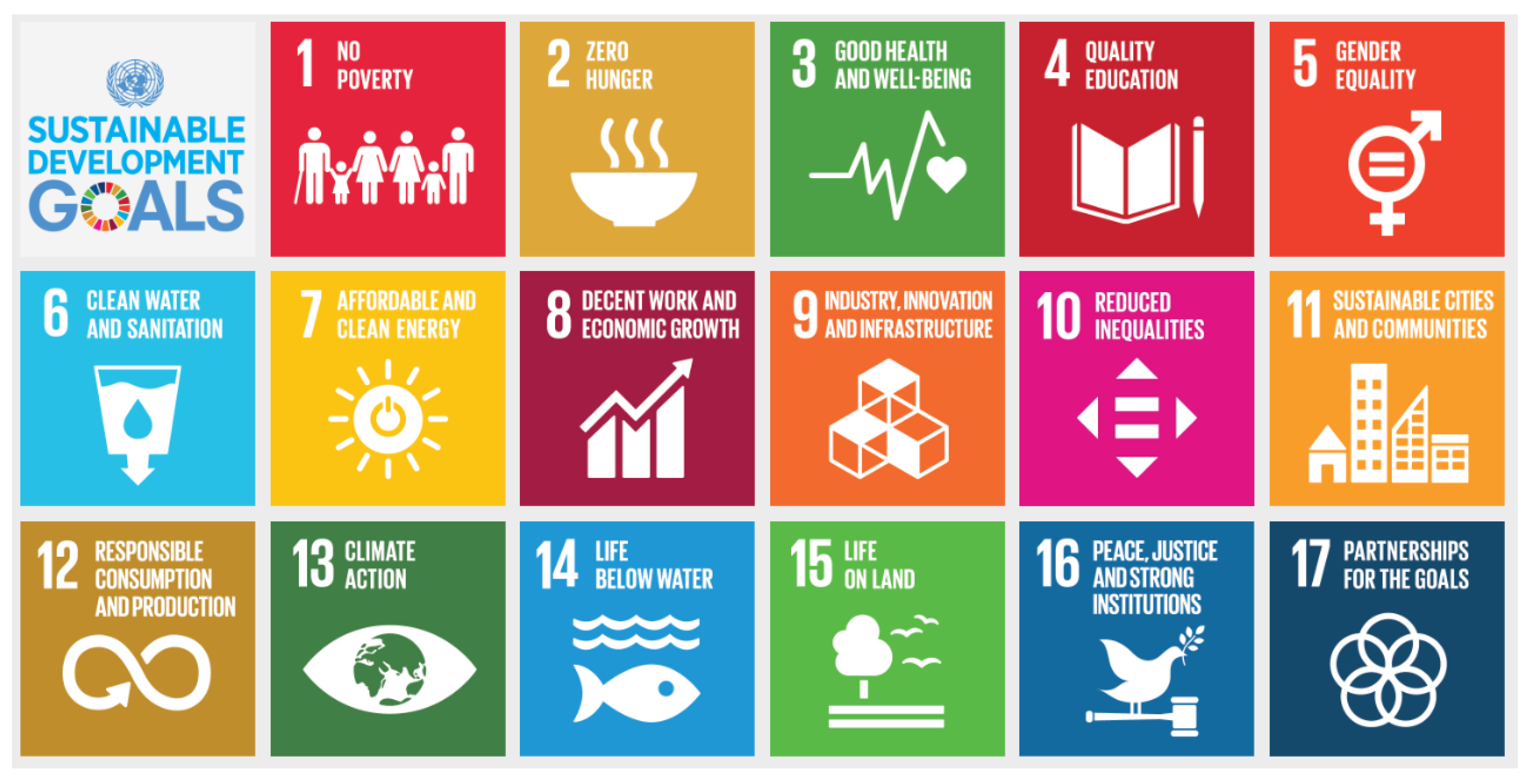
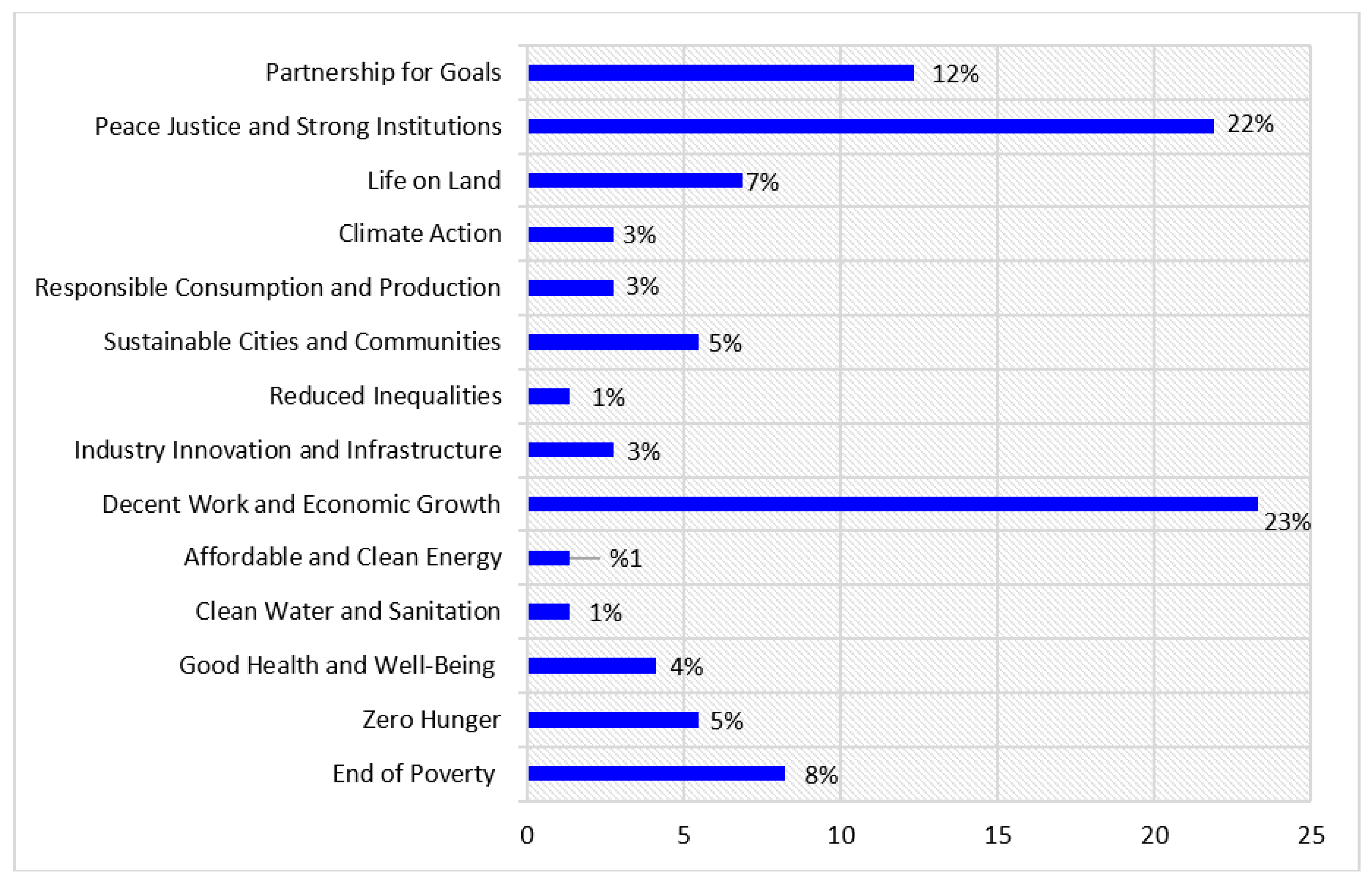
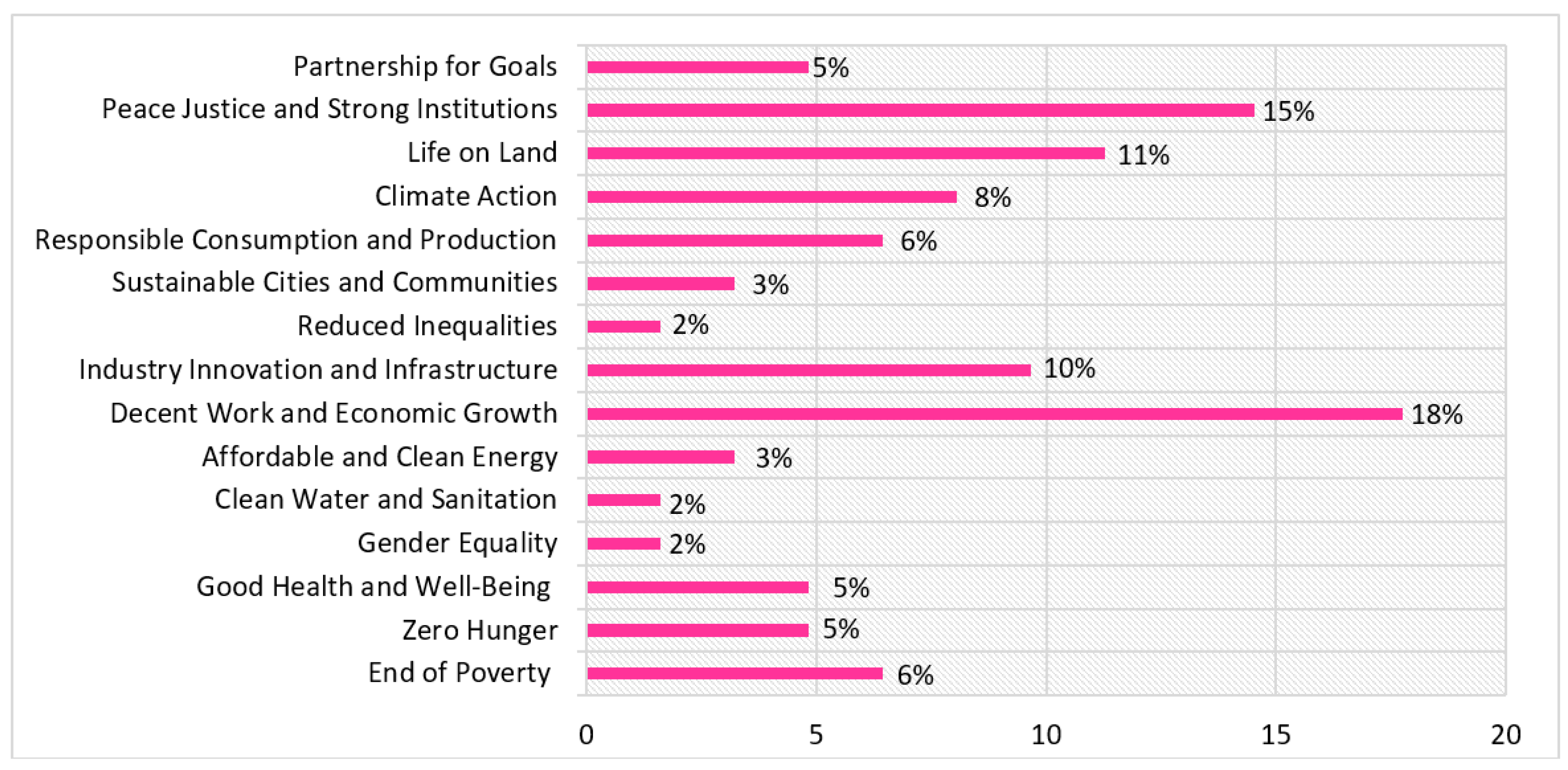
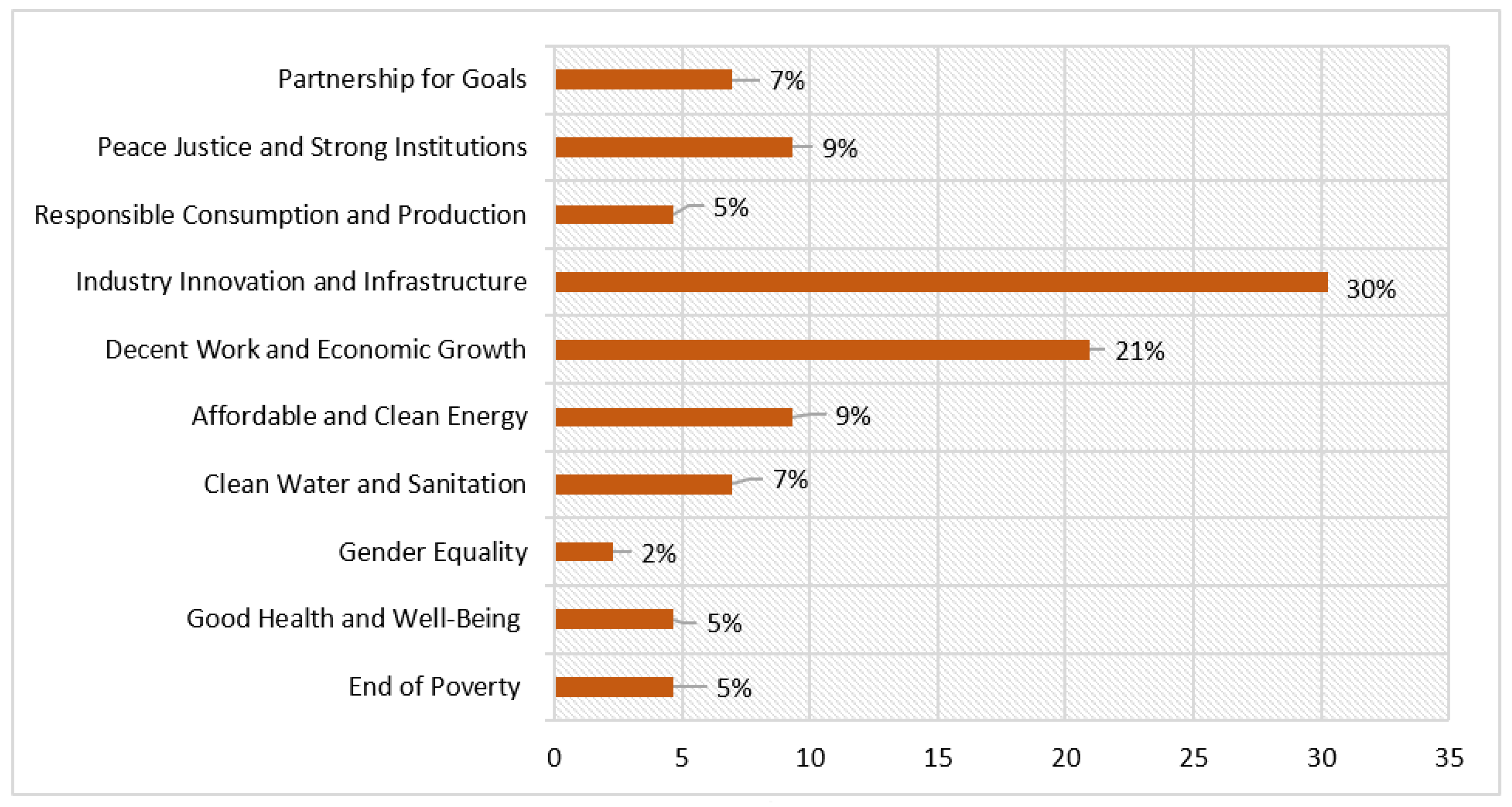
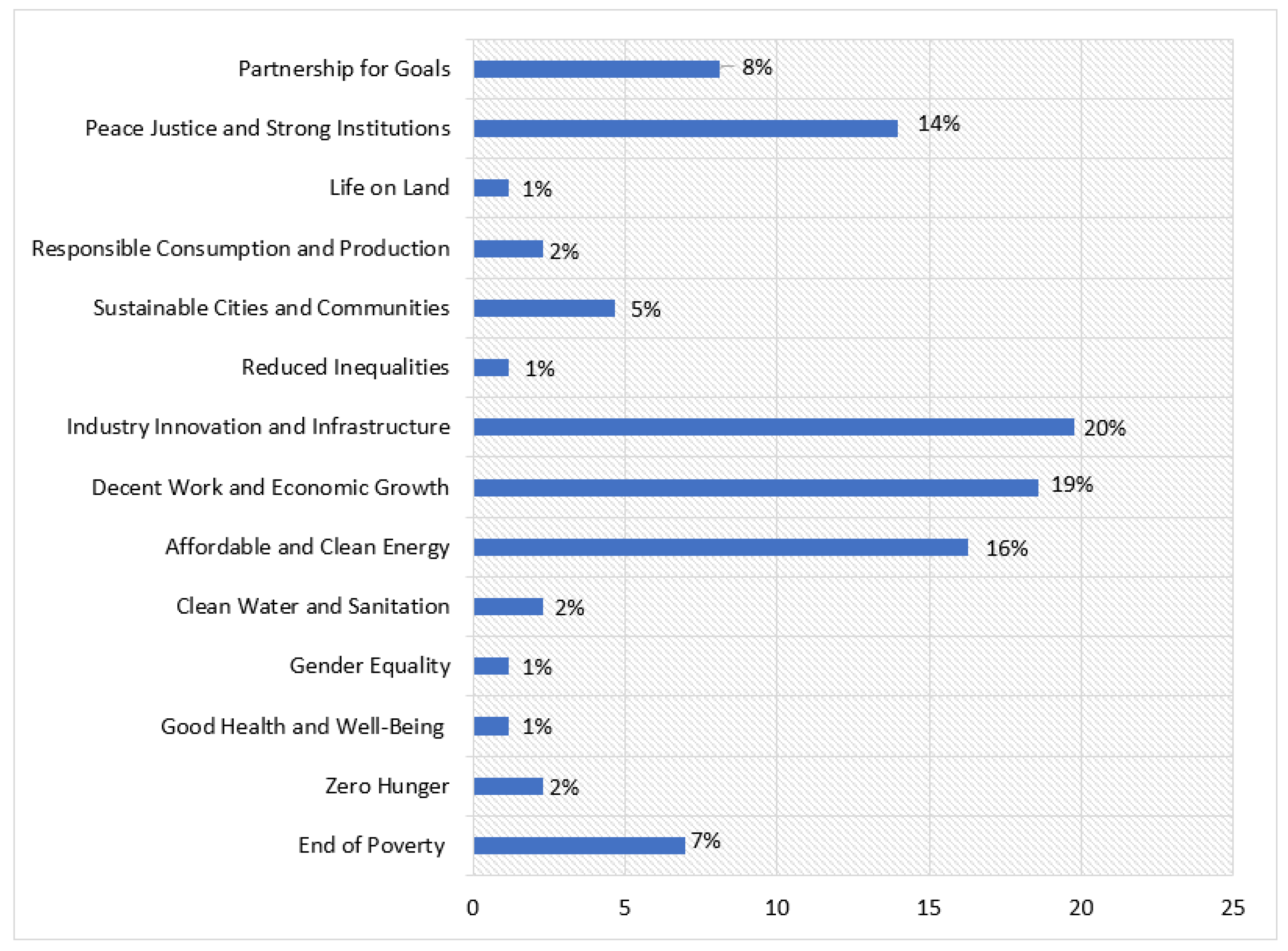
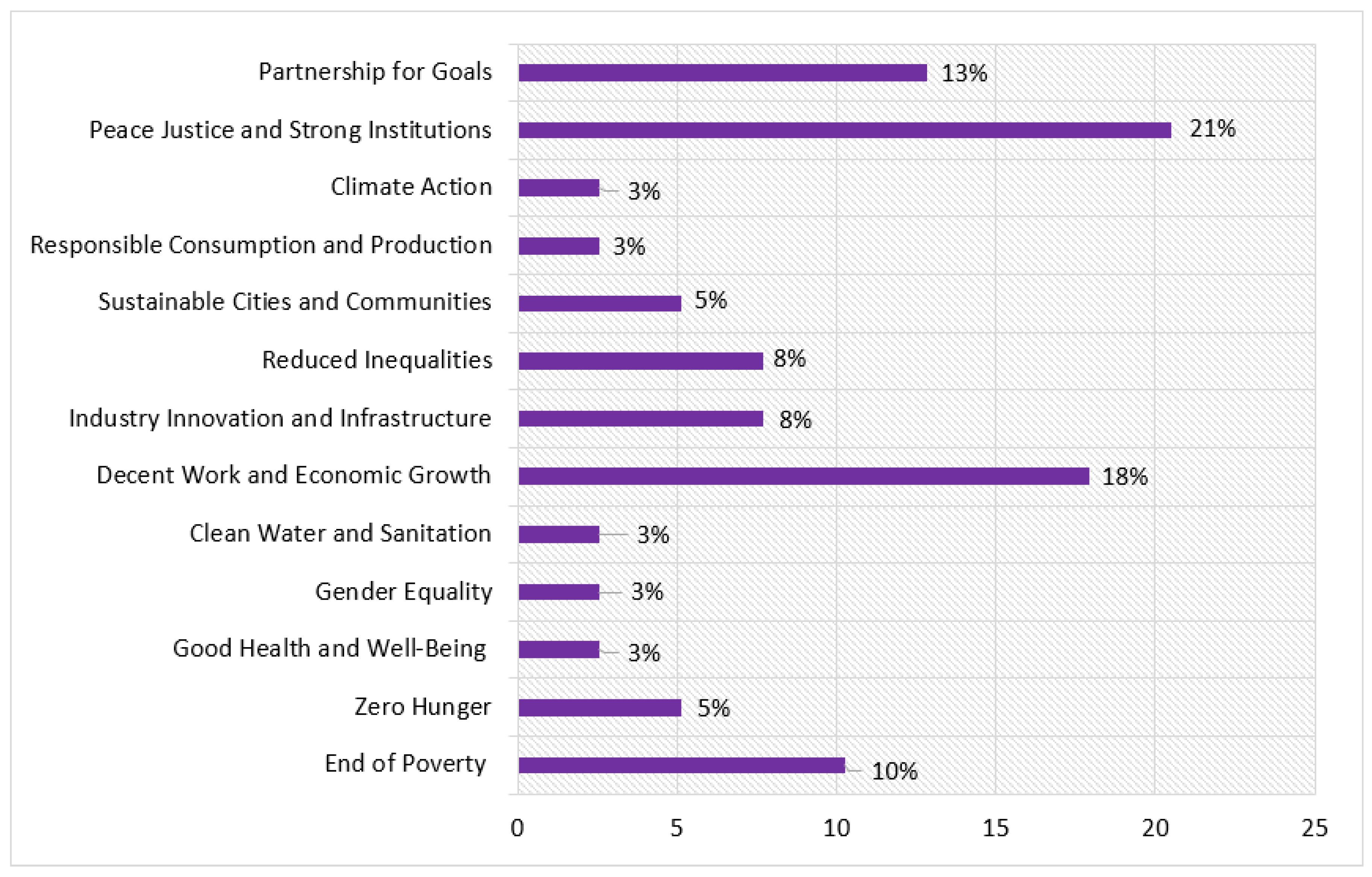
| Country | Mean | Std. Deviation | Major Adoption of UNSDG |
|---|---|---|---|
| Brazil | 4.2941 | 5.18127 | Decent Work and Economic growth |
| Russia | 3.6471 | 3.12132 | Decent Work and Economic Growth |
| India | 2.6875 | 3.62802 | Industry Innovation and Infrastructure |
| China | 5.0588 | 5.95263 | Industry Innovation and Infrastructure |
| SA | 2.2941 | 2.44348 | Peace and Justice and strong Institution |
© 2018 by the authors. Licensee MDPI, Basel, Switzerland. This article is an open access article distributed under the terms and conditions of the Creative Commons Attribution (CC BY) license (http://creativecommons.org/licenses/by/4.0/).
Share and Cite
Ali, S.; Hussain, T.; Zhang, G.; Nurunnabi, M.; Li, B. The Implementation of Sustainable Development Goals in “BRICS” Countries. Sustainability 2018, 10, 2513. https://doi.org/10.3390/su10072513
Ali S, Hussain T, Zhang G, Nurunnabi M, Li B. The Implementation of Sustainable Development Goals in “BRICS” Countries. Sustainability. 2018; 10(7):2513. https://doi.org/10.3390/su10072513
Chicago/Turabian StyleAli, Sajjad, Talib Hussain, Guoliang Zhang, Mohammad Nurunnabi, and Benqian Li. 2018. "The Implementation of Sustainable Development Goals in “BRICS” Countries" Sustainability 10, no. 7: 2513. https://doi.org/10.3390/su10072513
APA StyleAli, S., Hussain, T., Zhang, G., Nurunnabi, M., & Li, B. (2018). The Implementation of Sustainable Development Goals in “BRICS” Countries. Sustainability, 10(7), 2513. https://doi.org/10.3390/su10072513





